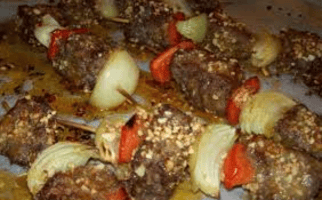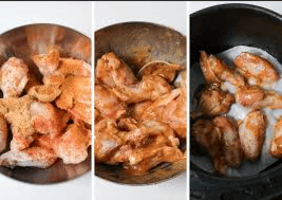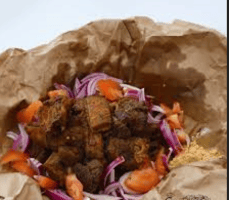Embarking on a keto journey in Africa might seem challenging at first, but our rich culinary heritage offers countless possibilities for delicious low-carb meals. As someone who has explored keto meal planning across various African regions, I’m excited to share how you can embrace this lifestyle while celebrating our local ingredients and flavors.
Whether you’re in Lagos, Nairobi, or Cape Town, this guide will help you navigate keto meal planning with authentically African twists.

Understanding Keto in the African Context
The ketogenic diet directs attention on foods that are very low in carbohydrates, moderate in protein, and high in fat. While traditional African cuisine often centers around carb-rich staples like fufu, pap, and ugali, the continents diverse food culture offers numerous keto-friendly alternatives that are both nutritious and satisfying.
Foods to Embrace on Your African Keto Journey
Proteins & Meats:
- Fresh fish (mackerel, tilapia, catfish)
- Goat meat (asun style)
- Grass-fed beef
- Organ meats (shaki, liver)
- Free-range chicken
- Bush meat (when available)
- Eggs (all preparations)
Healthy Fats:
- Palm kernel oil (unrefined)
- Coconut oil and coconut cream
- Avocados
- Olive oil
- Uda oil (in moderation)
- African palm oil (red oil, moderate use)
Low-Carb Vegetables:
- Bitter leaf (onugbu)
- Utazi leaves
- Ugwu (pumpkin leaves)
- Efo tete (African spinach)
- Okra
- Garden eggs
- Jute leaves (ewedu)
- Green bell peppers
Nuts & Seeds:
- Tiger nuts (in moderation)
- Pumpkin seeds (egusi)
- Coconut (fresh)
- African almonds
- Cashews (limited quantities)
Foods to Avoid
High-Carb Staples:
- Fufu (cassava, plantain, or yam-based)
- Pounded yam
- Rice (all types)
- Garri
- Amala
- Bread and pastries
- Corn and corn products
Starchy Vegetables:
- Yams
- Cassava
- Sweet potatoes
- Irish potatoes
- Cocoyam
Fruits High in Sugar:
- Mangoes
- Bananas
- Pineapples
- Oranges (limit to very small portions)
4-Day Nigerian Keto Meal Plan
Day 1:
Breakfast:
- Egg sauce with ugu leaves
- Coconut milk smoothie
Lunch:
- Egusi soup with grilled mackerel
- Cauliflower rice
Dinner:
- Peppered goat meat
- Sautéed bitter leaf
Day 2:
Breakfast:
- Nigerian egg and pepper omelette
- Avocado slices
Lunch:
- Okra soup with assorted meat
- Tiger nut flour fufu substitute
Dinner:
- Grilled suya chicken
- Garden egg sauce

Day 3:
Breakfast:
- Keto akara (made with ground tiger nuts)
- Spiced tea with coconut milk
Lunch:
- Afang soup with smoked fish
- Cauliflower swallow
Dinner:
- Pepper soup (goat meat or catfish)
- Stir-fried ukazi leaves
Day 4:
Breakfast:
- Coconut flour pancakes
- Nigerian herb tea
Lunch:
- Banga soup with dried fish
- Hearts of palm rice
Dinner:
- Grilled tilapia with herbs
- Efo riro (without added carbs)
Essential Tips for Staying on Keto in Africa
Kitchen Preparation:
- Keep keto-friendly snacks readily available
- Prepare vegetables in advance
- Stock up on local protein sources
- Make keto versions of favorite soups weekly
Social Situations:
- Eat before attending events if unsure of food options
- Bring a keto-friendly dish to share
- Focus on protein portions at parties
- Explain your dietary choices respectfully
Shopping Tips:
- Buy vegetables from local markets for freshness
- Purchase meat in bulk when prices are favorable
- Store non-perishable items during good harvests
- Build relationships with market vendors for best prices
Success Strategies:
- Track your water intake
- Maintain electrolyte balance with local salt
- Start gradually to avoid keto flu
- Keep meals simple but flavorful
- Use traditional preservation methods
- Plan meals around seasonal ingredients
- Listen to your body’s hunger signals
- Celebrate small victories
Practical Adjustments:
- Modify traditional recipes by removing carbs
- Use local herbs for flavor enhancement
- Find keto alternatives for favorite dishes
- Create meal prep routines that work with local power supply
- Develop backup plans for food storage during power outages
- Learn to calculate net carbs in local foods

Featured Recipe: Keto Suya Bowl
Equipment Needed:
- Grill or oven
- Large mixing bowl
- Sharp knife
- Wooden skewers
- Food processor for spices
Ingredients:
- 500g beef, cut into chunks
- 2 tablespoons ground peanuts (unsweetened)
- 1 tablespoon suya spice
- 1 tablespoon ginger powder
- 2 tablespoons olive oil
- 2 cups mixed greens
- 1 avocado
- 1/4 onion, sliced
Step-by-Step Instructions:
- Marinate beef in olive oil and spices for at least 2 hours
- Thread meat onto skewers if grilling
- Cook until desired doneness (about 15-20 minutes)
- Prepare the bowl with fresh greens as base
- Add sliced avocado and onions
- Place cooked suya on top
- Drizzle with olive oil
Tips for Success:
- Use fresh, not frozen meat for best results
- Don’t skip the marination time
- Keep the meat chunks uniform in size
- Watch the peanut powder amount to maintain keto macros
Troubleshooting:
- If meat is tough: Marinate longer or cut smaller pieces
- If too spicy: Adjust suya spice mix to taste
- If too dry: Add more healthy fats like olive oil
Meal Planning Strategies
Weekly Prep Basics:
- Purchase fresh ingredients at local markets.
- Prepare protein portions in advance
- Wash and store vegetables properly
- Make keto-friendly spice blends
Storage Solutions:
- Use traditional clay pots for vegetables
- Invest in airtight containers
- Consider solar-powered refrigeration in areas with unreliable electricity
FAQs
Can I do keto with African foods?
Yes, absolutely! Focus on meat, fish, low-carb vegetables, and healthy fats that are locally available. Many traditional African proteins and vegetables are naturally keto-friendly.
What can I substitute for rice and fufu?
Try cauliflower rice, palm heart rice, or konjac noodles. For fufu alternatives, consider mashed cauliflower or ground tiger nut flour dishes.
How expensive is keto in Africa?
While some specialty items might be costly, focusing on local, seasonal ingredients can make keto affordable. Buy from local markets and focus on indigenous vegetables and proteins.
Can I eat peanuts on African keto?
Yes, in moderation. Traditional groundnuts are fine in small amounts but track your portions as they contain some carbs.
Is Nigerian egusi soup keto-friendly?
Yes! Egusi soup is naturally high in fat and can be keto-friendly. Just ensure you’re not eating it with traditional carb-heavy accompaniments.
How do I handle social gatherings while on keto?
Focus on the meat and vegetable portions of dishes, bring your own keto-friendly dish to share, and explain your dietary choices respectfully to hosts.
What are the best keto breakfast options in Africa?
Try eggs with sukuma wiki, grilled fish with avocado, or keto-friendly smoothies made with local berries and coconut milk.
Incorporating Traditional Cooking Methods
Traditional African cooking methods like grilling, smoking, and slow-cooking are perfect for keto meals. These techniques enhance flavor while preserving nutrients and requiring minimal added fats.
Conclusion…
Keto meal planning in Africa doesn’t mean abandoning our rich culinary heritage. Instead, it’s about reimagining traditional dishes and ingredients to create healthy, low-carb alternatives.
With proper planning, local ingredient sourcing, and creativity in the kitchen, you can maintain a ketogenic lifestyle while enjoying the diverse flavors of African cuisine. Remember to adapt these suggestions to your local availability and preferences, and always consult with healthcare providers before starting any new dietary regimen.
By focusing on fresh, local ingredients and traditional cooking methods, you can create a sustainable and enjoyable keto meal plan that honors African culinary traditions while supporting your health goals. Start with the recipes and tips provided here, and don’t be afraid to experiment with local ingredients to create your own keto-friendly African
